
Real Club Recreativo de Huelva, S.A.D. is a Spanish football club based in Huelva, Andalucia, Spain. Founded on 23 December 1889, they are the oldest football club in Spain, and currently play in Primera Federación – Group 2, holding home games at Estadio Nuevo Colombino, which has a 21,670 seating-capacity.

Maria Christina Henriette Desideria Felicitas Raineria of Austria was Queen of Spain as the second wife of Alfonso XII. She was queen regent during the vacancy of the throne between her husband's death in November 1885 and the birth of their son Alfonso XIII in May 1886, and subsequently also until the latter's coming of age in May 1902.

Football is the most popular sport in Spain, with 61% of the population interested in it. Spain has some of the most influential teams in Europe as well as many players and teams registered in all categories. Moreover, football is the sport that interests the majority of Spanish people (48%) and a total of 67% of the population said they were fans of or had a liking for a particular club.
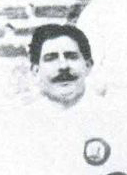
Pedro Parages Diego-Madrazo was a Franco-Spanish footballer, manager, and the 5th President of Real Madrid from July 1916 until 16 May 1926. During his mandate, Madrid FC received the Royal title (Real) from the hands of the King Alfonso XIII.

The Royal Spanish Football Federation is the governing body of football in Spain. Founded on 29 September 1913, it is based in La Ciudad del Fútbol of Las Rozas, a municipality near Madrid.
The King Alfonso XIII's Cup 1922 was the 22nd staging of the Copa del Rey, the Spanish football cup competition.
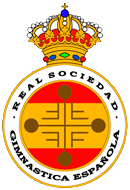
Real Sociedad Gimnástica Española (RSGE), also known as Gimnástica de Madrid, was a sports club based in Madrid, Spain. It was officially founded as an amateur gymnastics club on 2 March 1887 by Narciso Masferrer under the name "Sociedad Gimnástica Española".
Football is the most popular sport, both in terms of participants and spectators, in Madrid. Madrid is the only city that had derby matches in the UEFA Champions League finals.
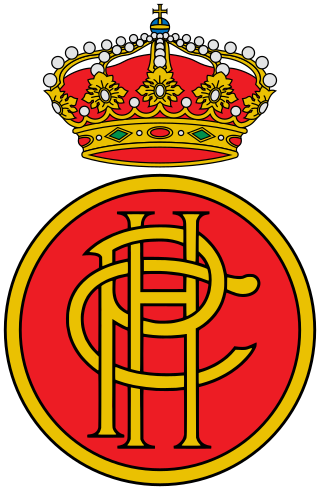
Real Club de la Puerta de Hierro, commonly known as Puerta de Hierro, is a private country club based in Madrid, Spain. It owes its name to the nearby iron memorial arch. Notorious for being associated with the royal families of Europe and the long-established elite, American President Gerald Ford called it "the club of kings and the king of clubs".

Samuel Alfredo Morris de Olea, was an Anglo-Filipino football pioneer who played as a goalkeeper and midfielder for some of the earliest Catalan clubs in existence. His younger brothers, Enrique and Miguel, followed him every step through, and together with them, he was one of the first pioneers of football in Catalonia, participating in some of the first football matches of the city and playing for several experimental teams in the 1890s such as Barcelona Football Club and Sociedad de Foot-Ball de Barcelona.

Enrique Ramón Morris de Olea, also known as Henry Morris or Morris II, was an Anglo-Filipino football pioneer and a prominent forward for FC Barcelona. His brothers, Samuel and Miguel, also played football, and together with them, he was one of the first pioneers of football in Catalonia, participating in some of the first football matches of the city and playing for several experimental teams in the 1890s such as the Sociedad de Foot-Ball de Barcelona.

The Sociedad de Foot-Ball de Barcelona was a football scratch team that existed between 1892 and 1896, mainly consisting of players from the British colony of Barcelona, but also with Catalans and even Frenchmen. This entity was initially known as the Barcelona Football Club (1892–94), before being renamed as Sociedad de Foot-Ball de Barcelona following a restructuring in 1894. It was one of the first Catalan football clubs and is considered a predecessor of FC Barcelona founded in 1899. Some historians ascribe this entity as "a group of thirty friends, English workers, who played alternately and without a regular squad".
The first official football match in Spain between two sides playing under the rules of the English FA was contested between the two oldest clubs in Spain, Recreativo de Huelva and Sevilla FC, on 8 March 1890, held at the Hipódromo de Tablada in Seville.
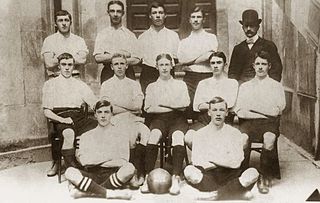
The Exiles Cable Club was a multi-sports club based in Galicia, Vigo. It was founded in 1873 by English workers of the Eastern Telegraph Company. It was one of the first companies dedicated to sports in the country, most notably, football, having a section dedicated to the said sport due to its rapid growth in England, the homeland of the company's workers. Recent studies have shown that the Exiles football team, known as Exiles Foot-Ball Club or Exiles FC, was the first football club to have been recorded in the Iberian Peninsula, being one of the proto-clubs that pioneered and expanded football in Spain, together with the Rio Tinto English Club (1878) and the Cricket and Football Club of Madrid (1879).
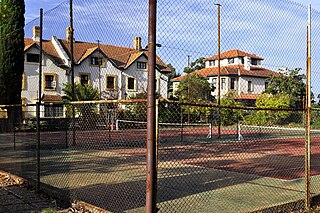
The Club Inglés Bella Vista is a cultural institution that exists in the Spanish municipality of Minas de Ríotinto, in the province of Huelva. It was founded in 1878 by members of the British colony of Minas de Riotinto who worked for the Rio Tinto Company Limited (RTCL), and it soon become the center of social life in that British colony. Together with Exiles Cable Club (1873) in Vigo, this was one of the first companies dedicated to sports in the country, most notably, cricket, tennis and football, having sections dedicated to the said sports due to its prominence in England, the homeland of the company's workers.

José Figueroa y Torres, also known by his noble title of Viscount of Irueste, was a Spanish politician of the Restoration. He was a football pioneer in Madrid, being the fundamental head behind the foundations of the very first legalized sports club in the country, Cricket and Football Club of Madrid in 1879, serving the entity as its first-ever president.
The Outdoor Games Society is a multi-sports society based in Madrid, Spain, which was founded in April 1897, with the purpose of promoting outdoor sporting activity, such as athletics, cycling, and football. It was the first society dedicated to athletics in the country, and just the second football team to have been formed in Madrid only after the proto-club Cricket and Football Club of Madrid of 1879.

The Madrid Association of Foot-ball Clubs was a football association responsible for the administration of football in Madrid between 1902 and 1904. It was the first football association founded in the capital. AMCF was one of the most important entities in the amateur beginnings of Spanish football, organizing the first-ever tournament disputed exclusively by Madrid clubs at the end of 1902 as well as the infamous 1904 Copa del Rey, which was notable for its chaotic development and the fact that Athletic Bilbao won the trophy without playing a single game, being this what ultimately led to the federation's demise.

The Limiako Hippodrome, or the Hippodrome of Lamiako, was a sports venue based in the Lamiako neighborhood of Leioa, Biscay, Basque Country. Originally an equestrian venue, it's now best remembered as a historic football venue. The Campo de Lamiako played a pivotal role in the early steps of football in the Basque Country as one of the first football fields in the city, serving as a practice ground for the city’s first known football matches between the members of the Club Atleta of the Nervión Shipyards. In 1894, the Limiako field hosted a match between young Bilbao enthusiasts and British workers, which is now regarded as one of the first ‘international’ matches in the history of the sport.

Samuel James Morris Campbell, commonly known as Jaime Morris, was an English businessman and engineer. He is best known for being one of the first pioneers of football in Catalonia, playing as a goalkeeper for some of the earliest Catalan clubs in existence, such as Barcelona Football Club, in the early 1890s, at the age of 50.














